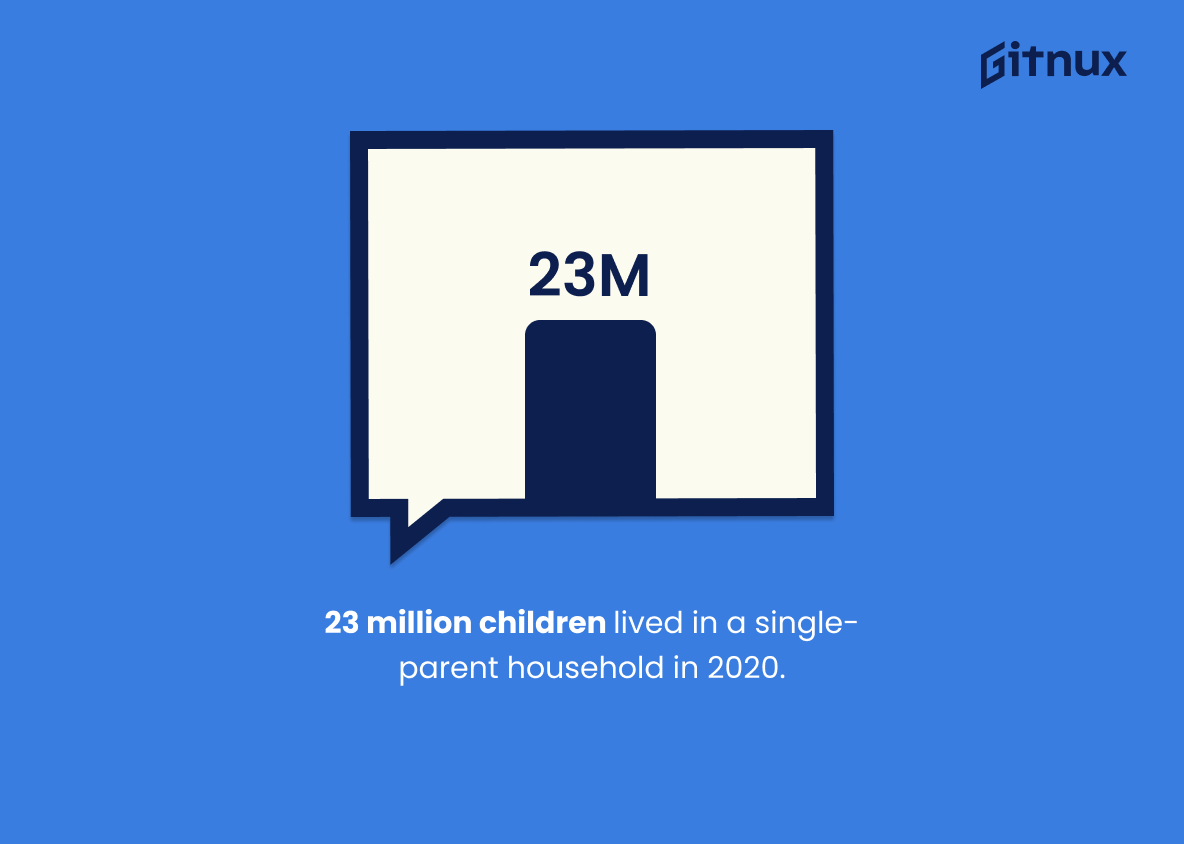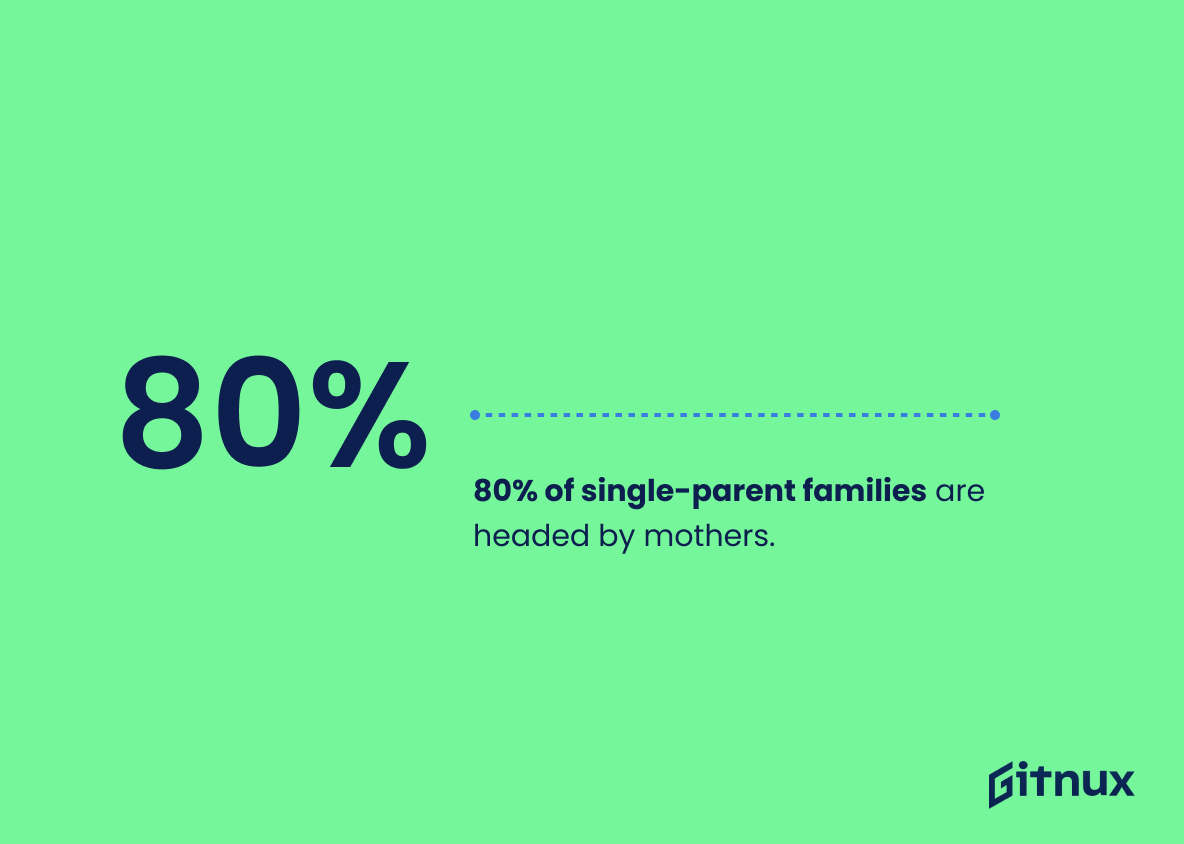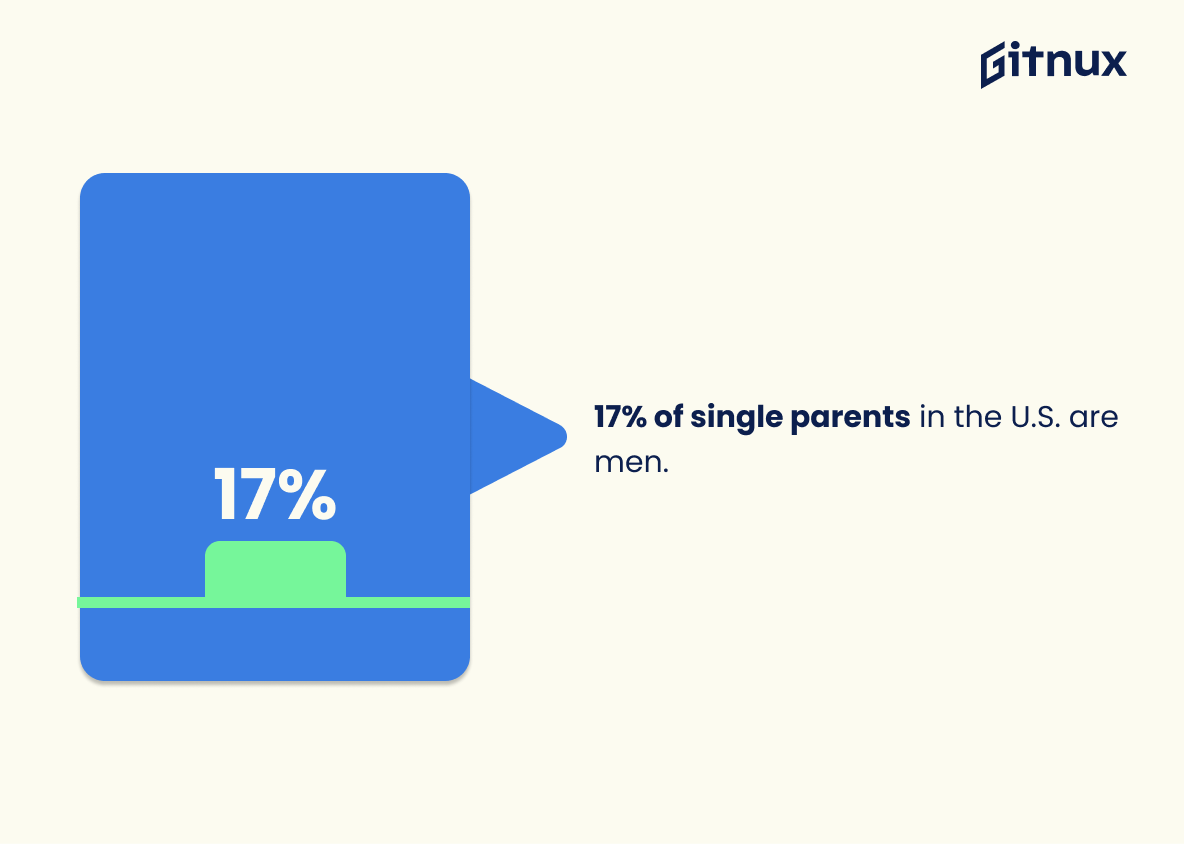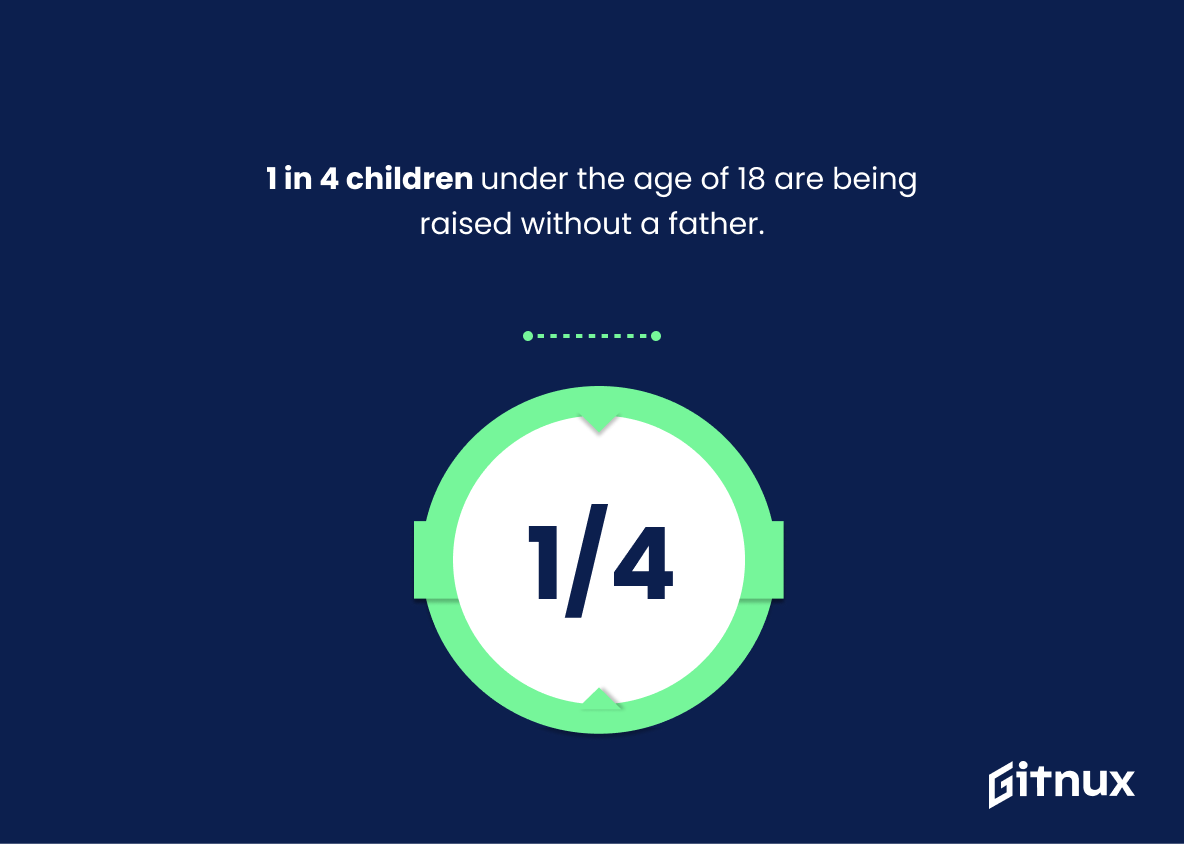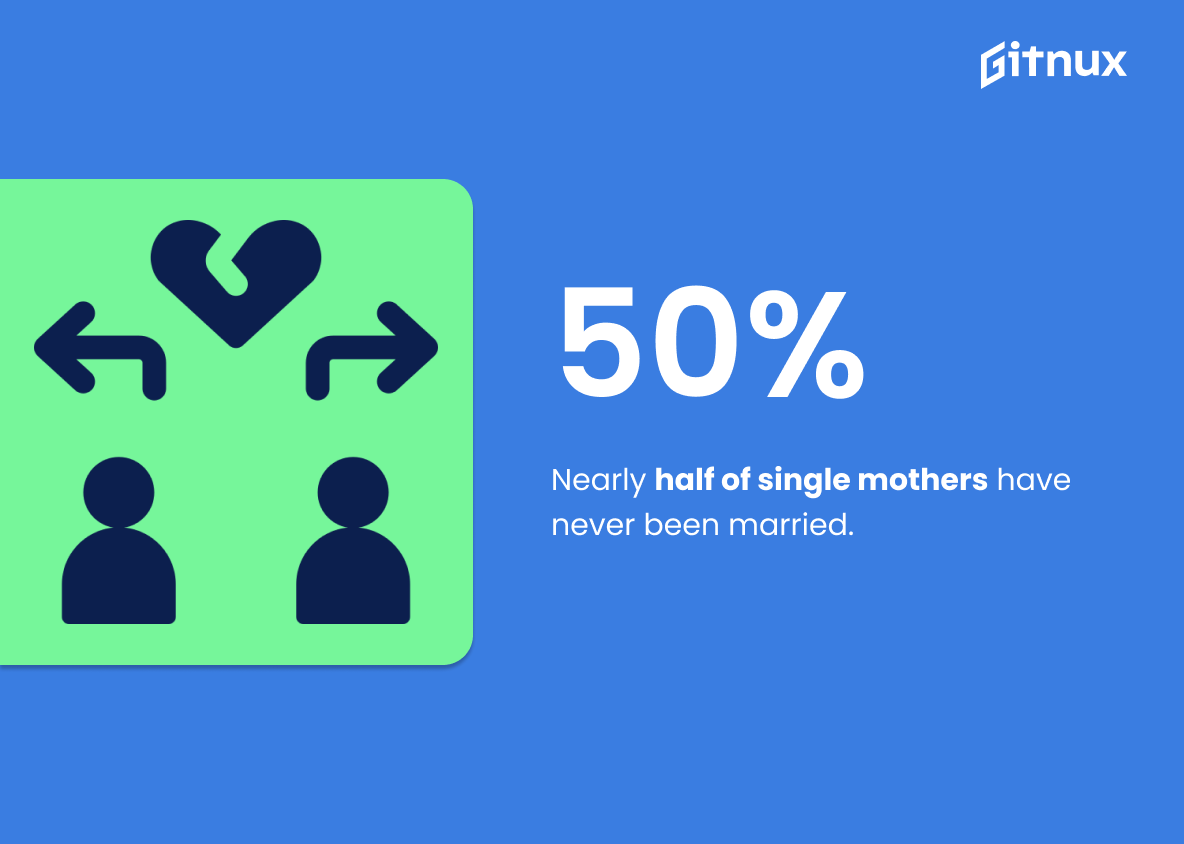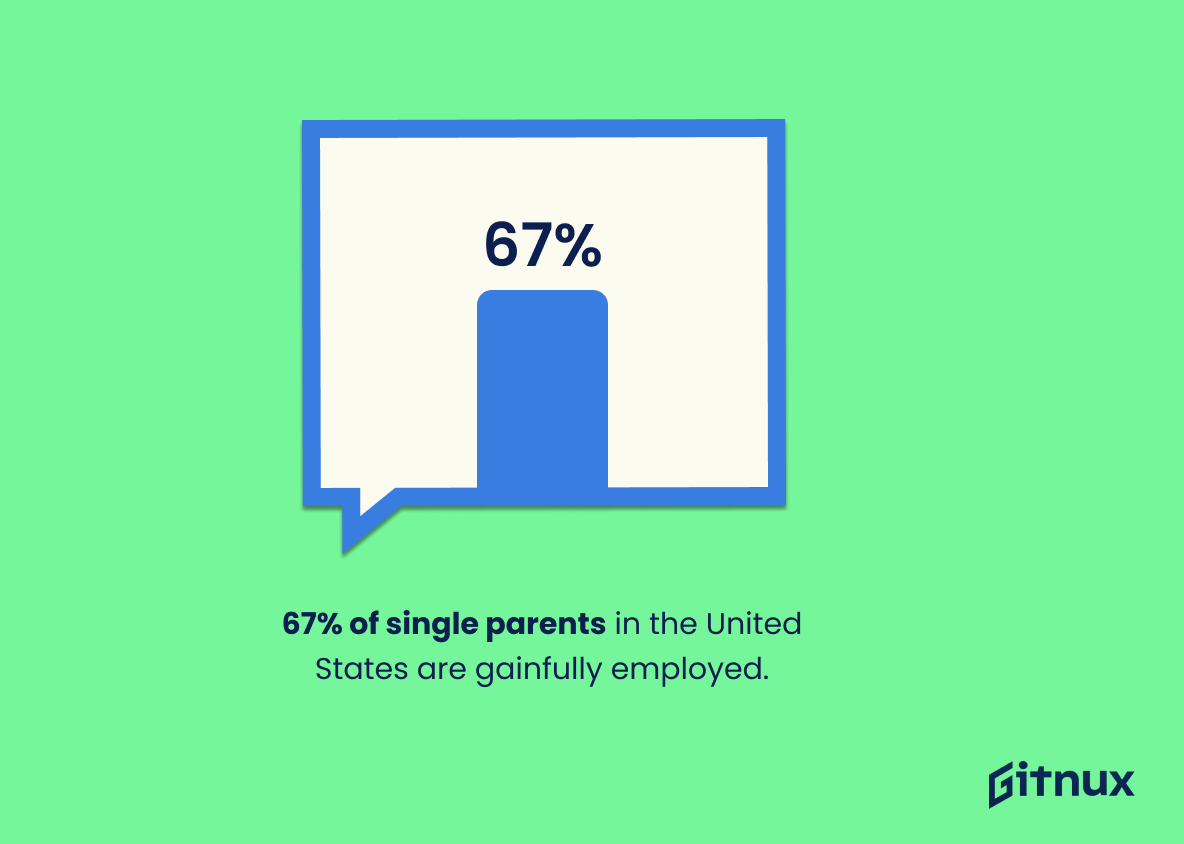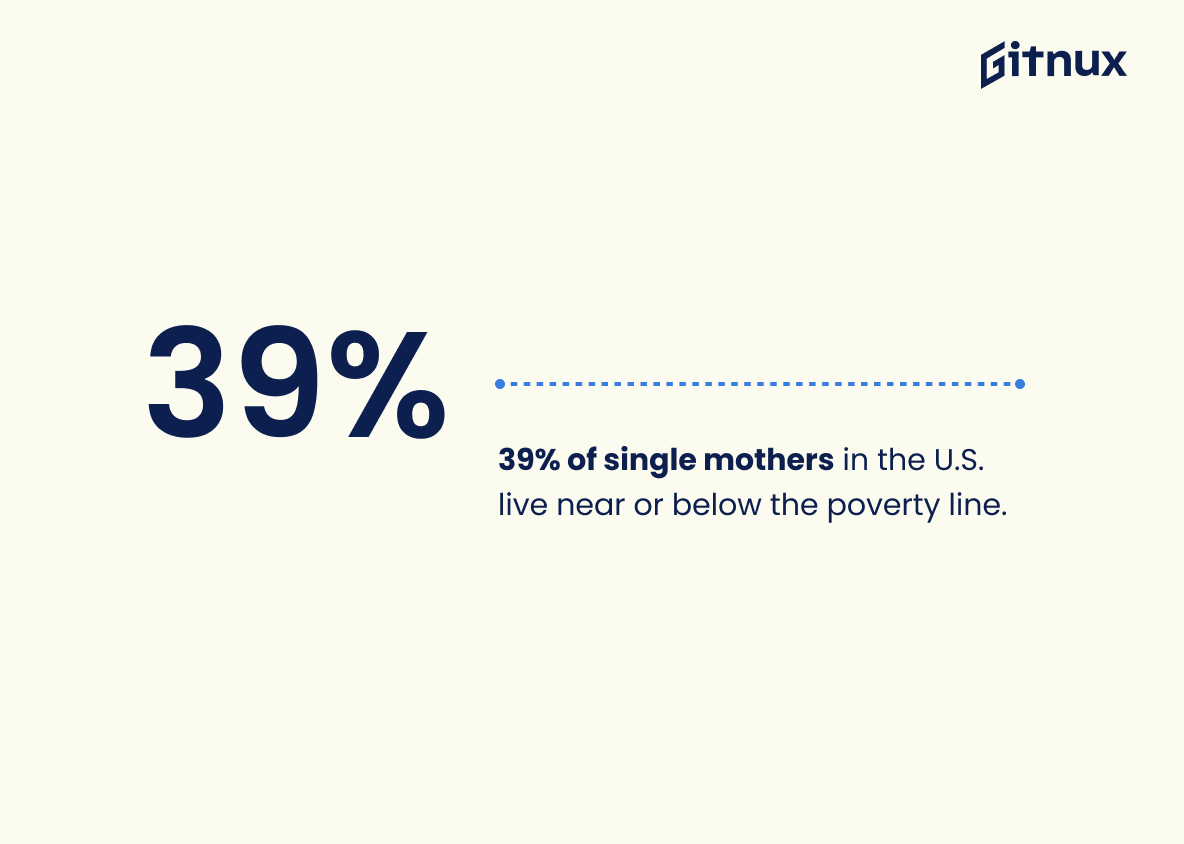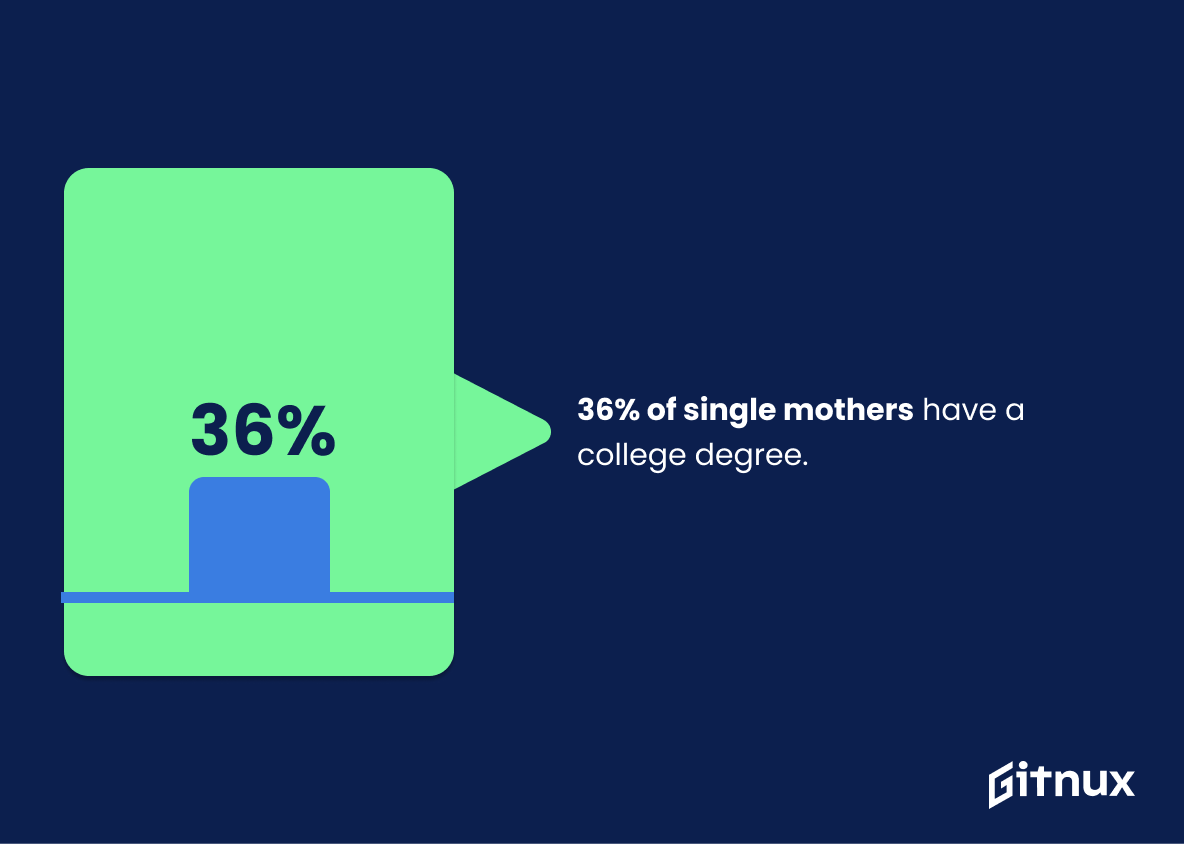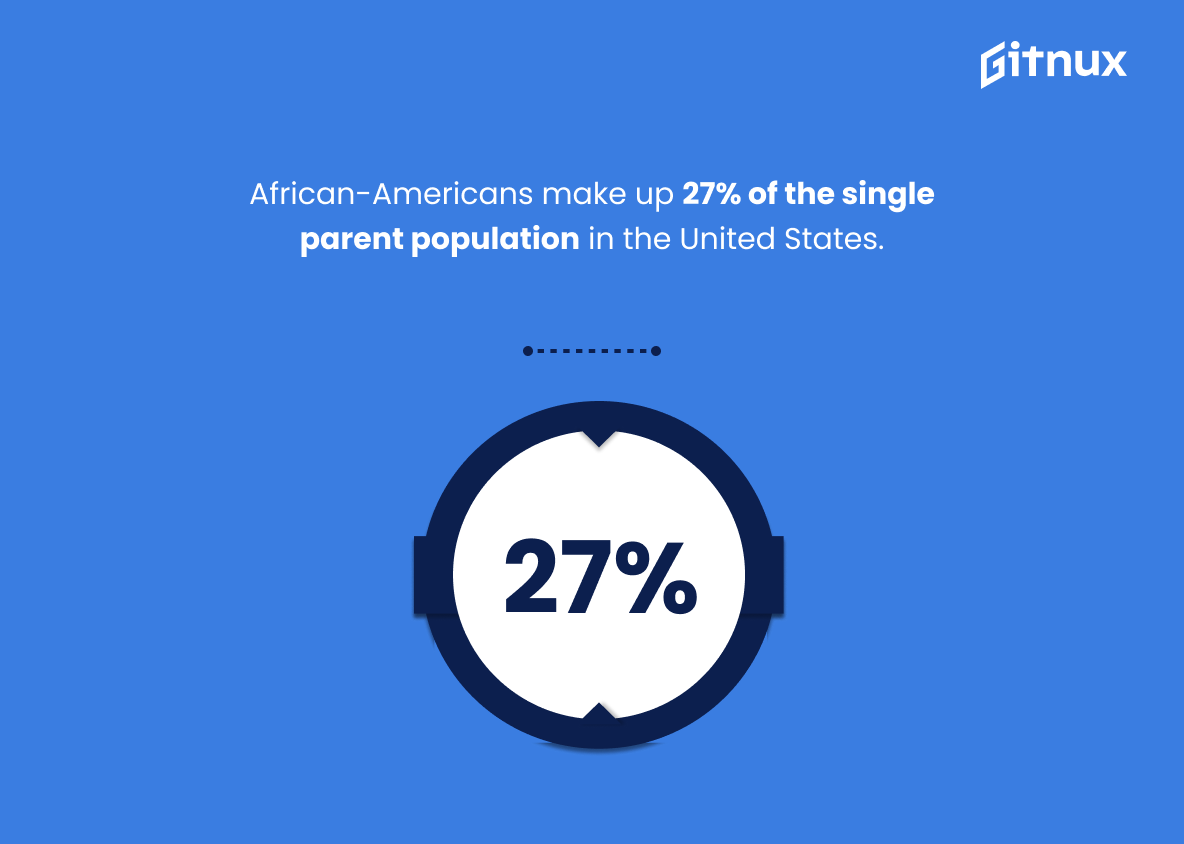Delving into the realm of family dynamics, we are met with a rising global trend – single parenting. Single-parent families, once a rarity, have now become a significant subset of our society. This blog post aims to shed some light on the diverse aspects that surround single-parent families by meaningfully interpreting various statistics and digging deeper into their implications.
We will explore the evolution in the number of single-parent families, the associated socio-economic factors, their influence on child development, and much more. Thus, providing a holistic understanding of the changes in family structures and their wider societal impact.
The Latest Single Parents Family Statistics Unveiled
As of 2020, around 25.5% of families in the U.S. were headed by a single parent.
Grasping the magnitude of single parenting in the U.S, isn’t merely about numbers and percentages. The mentioned statistic, revealing that around a quarter of families in the U.S as of 2020 are spearheaded by a solitary figure, unfolds a larger narrative beyond just figures. It manifests the complexity and evolution of family structure over time, offering us enlightening insights into the dynamics of what we call “family” today. In dissecting this statistic, we unearth a deeper understanding of socio-economic impacts, policy implications and effective support mechanism necessary for single parents.
It provides a useful spectacles for policymakers, sectors of education, healthcare and social services to realise the scale of people in such circumstance and adapt their strategies accordingly. It indeed draws a clearer picture, embedding the gravity and prevalence of single parenting within our society, effectively bridging the gap between mere awareness and impactful action. More so, it adds immense depth to our discourse on single parent family statistics, accentuating the urgent need for tailored assistance mechanisms and policies that respond to their unique needs and challenges.
In 2020, approximately 23 million children lived in a single-parent household.
Highlighting the figure of approximately 23 million children in single-parent households in 2020 casts a gaze at the magnitude of the circumstances and challenges single parents and their children may encounter. It underscores the multitudes navigating through distinct familial structures which can often be underrepresented.
This data point sets a comprehensive backdrop for discussions around necessary systemic support, policy changes and societal understanding. Consequently, it provides essential color, fleshing out the diverse narrative threads woven through the tapestry of single-parent family statistics.
80% of single-parent families are headed by mothers.
In the swirling matrix of single-parent family dynamics, one undeniable data beacon powerfully illuminates the landscape — a whopping 80% of these families are piloted by mothers. This figure not only paints an indelible portrait of the maternal tenacity and steel but also underscores the enormity of challenges that women face in the world of single parenthood, reflecting the impassioned debate around child care policies, workplace rights, and social assistance.
In this context, every proposed solution or intervention should comprehend this, involving the ongoing struggle and inspiring resilience of single mothers at its core, to truly resonate and make a tangible difference.
About 17% of single parents in the U.S. are men.
Peeling the onion layers of the U.S. single parent family statistics, we uncover a less commonly visible facet: Nearly 1 in every 5 single parents is a man. This narrative disrupts the stereotypical image, inserting men into the single-parenting conversation.
It illuminates the changing dynamics of family constructs and gender roles, providing a counter-narrative to the traditional view highlighting various responsibilities, roles, and challenges faced by these men. It’s a vital piece in the puzzle, and understanding it encourages a holistic and inclusive portrayal of single-parent families.
One in four children under the age of 18 are being raised without a father.
Unraveling the tapestry of single parent family statistics, we uncover the striking reality: a full quarter of children under the age of 18 navigate life without a father’s presence. This compelling statistic amplifies the enduring narrative of single parenthood and echoes the challenges faced by solo parents, primarily mothers, in their child-rearing journey.
It’s a testament to their resilience, strength and their ability to juggle multiple roles, simultaneously. Yet, it also highlights an urgent call to action. Action that aids the spectrum of societal, emotional, and financial difficulties these families often encounter; from insufficient resources to the enormous task of filling both parental roles.
Moreover, appreciating this statistic plants the seed of understanding the different forms parents can take. Whether biological, step, surrogate, or absent, each distinctive situation paints yet another stroke on the diverse canvas of family structure. It’s a powerful reminder that parenthood is as varied as it is universal, a story of love told in countless different ways.
Nearly half of single mothers have never been married.
Highlighting the statistic that ‘nearly half of single mothers have never been married’ serves as a pivotal compass in our exploration of single-parent family dynamics. It pulls us away from traditional assumptions that single parenthood is dominantly the result of divorce or separation.
This fact not only expands our perspective but also underlines the need to revisit how societal support, policies and attitudes are structured. Recognizing these varied paths to single parenthood fosters a more inclusive and accurate discussion, shedding light on a significant segment within the single parent population landscape.
Around 67% of single parents in the United States are gainfully employed.
Delving into the statistic that approximately 67% of single parents in the United States are gainfully employed forms a compelling narrative for any single-parent family statistics blog post. It weaves a significant story around the economic resilience and labor force participation of single parents against odds often stacked against them.
The data point offers an insightful perspective into how single parents surmount challenges to provide for their families while simultaneously managing numerous household duties. Unveiling this information can inspire conversation around the need for better support frameworks and workplace policies to assist single parents in balancing their family commitments alongside their career objectives.
About 39% of single mothers in the U.S. live near or below the poverty line.
Highlighting that approximately 39% of single mothers in the U.S. live near or below the poverty line serves as a compelling wake-up call in a blog post about Single Parent Family Statistics. It emphatically underscores the financial strain and hardship often associated with single parenthood, particularly for mothers.
This stark reality challenges readers to not only empathize with these struggling families, but also urges them towards social and political engagement to advocate for necessary changes in societal and legislative structures. By understanding the economic plight of single mothers, readers are likely to gain a more holistic perspective of the significant economic challenges within the single-parent landscape in the U.S.
36% of single mothers have a college degree.
Delving into the educational sphere of single mothers, it’s enlightening to uncover that 36% of these resilient women are college graduates. This number takes on remarkable significance within the framework of single parent family statistics. For starters, it shatters preconceived notions that single mothers may not be highly educated or that single parenting curtails educational ambition.
This percentage speaks volumes about their pursuit of higher education, symbolizing their commitment to personal growth and potentially improving their livelihoods. Equally important, it denotes a pool of role models demonstrating to their children that education can be pursued irrespective of circumstances. As numbers scroll down on statistics chart, each percentage point represents a powerful real-life story and could potentially impact society’s understanding and actions toward single parent families.
African-Americans make up 27% of the single parent population in the United States.
Surfacing the fact that African-Americans constitute 27% of the single parent population in the United States provides an insightful lens into the demographic composition of solo parent households. These figures have significant implications for policymakers, educators, social workers, and community leaders aiming to support single parent families.
Understanding these complexities is crucial, as it can inform strategies that address the unique challenges faced by these parents, ultimately enhancing the societal support fabric. Furthermore, discussing this statistic injects depth into the conversation, broadening our understanding of the experiences of single parents across different racial demographics.
In 2020, about 33% of Hispanic families were headed by a single parent.
Nestled amidst the many layers of single parent family statistics, the revelation that approximately 33% of Hispanic families were led by a sole guardian in 2020 offers a colorful paint stroke on the vast canvas of family dynamics. It’s a demographic detail that sheds light on the parenting realities faced by a significant portion of the Hispanic community.
Understanding this statistic paves the way towards a broader conversation about familial structures, socioeconomic factors, and cultural nuances. It probes deeper into the balance of responsibilities between work and childcare—one often disproportionately shouldered by single parents. An empathetic understanding of this statistic contributes towards more productive policies, supportive structures and initiatives catered specifically towards easing the life of single parents within the Hispanic community.
Approximately 8% of single fathers live with cohabiting partners.
Delving into the statistics of single parenting, one illuminating fact reveals that nearly 8% of single fathers reside with cohabiting partners. This reality conveys an essential aspect of the daily lives and support systems of these single fathers. The unique dynamic could influence their parenting styles, financial stability, and overall well-being.
By acknowledging this fact, we broaden our perspective of single parenthood, demonstrating that it does not always mean isolation; instead, it can also incorporate diverse forms of partnership and support. Such information lends depth and nuance to our understanding of single parent families, enriching the narrative beyond traditional stereotypes or assumptions.
Single mothers, on average, earn less than single fathers.
Delving into the heart of statistics illuminates this stark revelation: on average, single mothers earn less than single fathers. In the narrative of single-parent family statistics, these figures are compelling, denoting an economic chasm driven by gender bias. These wage disparities reverberate through communities, shaping financial dynamics, children’s upbringing, educational opportunities, and quality of living.
It is an undercurrent pulsating beneath the face of conventional discourse. The relevance of this statistic emerges not only numerically, but chiefly through its socio-economic implications, vital in order to engender informed conversations as we strive for equal opportunities for all single parents.
In the UK, nearly 2 million single parents are looking after children, making up a quarter of all families with dependent children.
Highlighting the fact that nearly 2 million single parents in the UK are caring for their children emphasizes the substantial portion they comprise – a quarter of all families with dependent children. This key figure underscores the prevalence of single-parent families in contemporary society.
This lends weight to the dialogue on the unique challenges and triumphs of single parent families, thus setting the tone for the blog post on Single Parents Family Statistics. It also helps challenge stereotypes, inform social and family policy, and adds depth to our understanding of the varied family structures present in the UK.
The number of single parent families in Canada increased by 9.2% between 2011 and 2016.
Shedding light on the significance of this statistic, it paints a vivid picture of the shifting family dynamics in Canada. The steep 9.2% leap in single parent families from 2011 to 2016 isn’t just a number, it represents a multitude of stories, challenges, and triumphs.
This illustrates that more parents are taking on the dual role of being both caregiver and breadwinner, highlighting potential changes in societal, economic and cultural aspects. Not only that, it underscores the changing face of what we typically perceive as ‘family’, providing readers with a modern, nuanced perspective on parenting in the blog post.
Conclusion
In essence, single-parent family statistics underscore a significant societal shift from past norms. The rise in single-parent households demonstrates a more diverse array of family structures and changing cultural norms. However, the challenges these families face, underscored by economic hardship and societal pressure, make it clear that society and relevant institutions must rise to provide necessary assistance and resources.
The adaptability and strength of single parents are commendable, but they still deserve support to empower and aid them on their remarkable journey. Together, we can ensure their statistics signify resilience and hope, rather than hardship.
References
0. – https://www.www150.statcan.gc.ca
1. – https://www.www.pewresearch.org
2. – https://www.www.ons.gov.uk
3. – https://www.iwpr.org
4. – https://www.singlemotherguide.com
5. – https://www.www.statista.com
6. – https://www.fatherhoodfactor.com
7. – https://www.www.childtrends.org
8. – https://www.www.kff.org
9. – https://www.datacenter.kidscount.org
10. – https://www.www.childandfamilyblog.com

